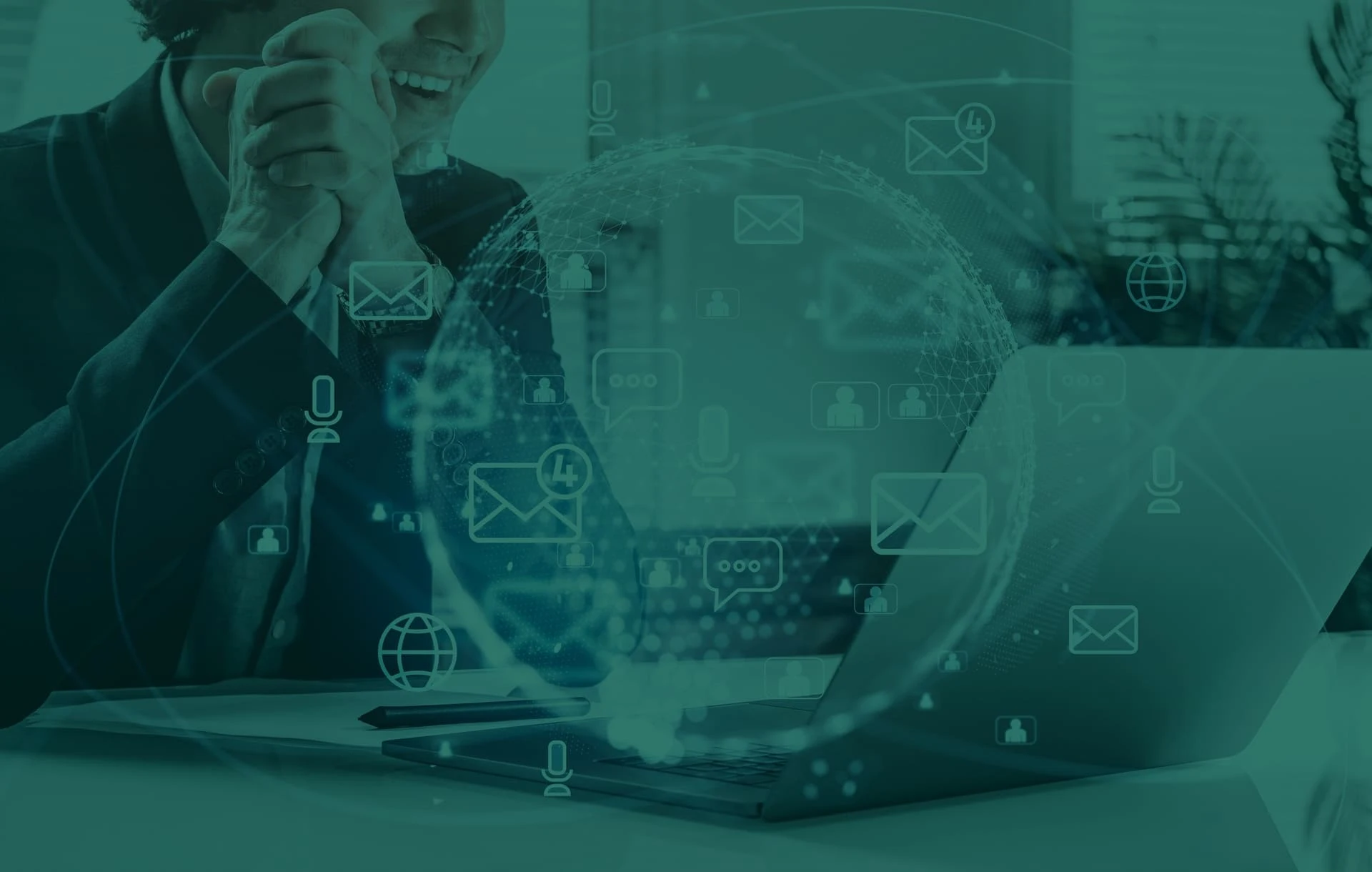Table of Contents
Software technology has transformed the way people conduct business. It has helped digitize complex and routine processes, increase employee productivity with more streamlined management, and improve engagement with customers, partners, and suppliers—all of which significantly reduce day-to-day account and operational expenses. Besides cost reduction, this enhanced efficiency also empowers businesses to venture into new opportunities and connect with broader industry ecosystems, ultimately appreciating their bottom lines.
While a software application is vital to the success of any modern business, it needs proper maintenance and—on occasion—significant revamp to better adapt to the changing environments. Likewise, companies may sometimes expand rapidly in such a short amount of time that their existing systems fall short in adjusting to their operational scale-ups. In the era of rapidly shifting technology trends, modernizing obsolete software is, thus, highly essential to business continuity.
This article will cover the importance of legacy migration, the different tactical approaches to managing legacy systems, and how to recognize signs when businesses should migrate from outdated applications to new, cutting-edge solutions.
What is legacy migration?
To fully understand the scope of legacy migration and why it’s integral to business, we first need to take a closer look at legacy applications. A legacy application or a legacy system refers to a computing program that has become archaic due to the changing landscape of business and technology.
Much of the failure within a legacy application isn’t necessarily inherent in its codebase. But rather, it is induced by the waning structural support to maintain its performance over time, including the discontinuation of vendor updates and stability fixes.
This means that a legacy application can perfectly execute the tasks it was initially designed for. However, it eventually hits certain performance limitations as the business ventures outwards. These limitations prevent the assimilation of newer and more complex capabilities—including, among others, better data integration, more intuitive user interface, and cloud computing—failure of which would ultimately keep businesses at a standstill.
To alleviate this problem, businesses may decide to refurbish their outdated IT systems with a more robust hardware infrastructure or a more advanced software platform—typically lightweight application frameworks like Spring Framework and cloud-based services like Microsoft Azure. In some instances, this system migration also involves a complete overhaul of the entire application architecture from a cumbersome monolithic design to highly decentralized and scalable containers known as microservices. All of these processes have come to be known as legacy migration.
Different types of legacy system management
Keeping a legacy system up to speed requires different applied solutions. Some legacy systems can perform optimally with just a few enhancements, while others need to relocate to an entirely new environment for better structural support. Knowing the distinctions between these methods is essential to determine the best course of action for your business. In essence, there are three common types of legacy system management in practice today, and they are as follows:
Lift-and-shift refers to the process of moving your entire application to a new environment without making any significant changes to the information, data, and functionalities contained therein. This process usually occurs when businesses move their application database from an on-premise server to a cloud platform. Any benefits reaped from the migration—such as lower operational costs, enhanced security, and reliable performance—are merely byproducts of the target environment.
Modernization, on the other hand, alludes to a systematic act of bolstering the legacy system with significant capability improvements primarily within its native environment. Any plans on relocation would only be viable if the move would offer substantial enhancements in functionalities. Examples of modernization include a website redesign for better user experience, system updates for additional features, and integration of new languages, libraries, frameworks, and infrastructure platforms.
Transformation seeks to combine the best practices of the two approaches. This process occurs when a business seeks to move the core functionalities of a legacy system into a more conducive platform while also making incremental or sequential improvements in capabilities and designs as necessary. Transformation is, thus, a preferred solution for companies seeking to innovate their business process by restructuring their applications.
When to know your business needs legacy migration?
An outdated software program can prove harmful to businesses. However, most are often unaware that their legacy applications are in serious need of an upgrade. It is partly because most software issues start small but soon compound into a bigger, more recurring problem if ignored. To nip this in the bud, you need to watch out for several signs that indicate this underlying problem.
Expensive maintenance costs
System maintenance takes place to rectify faults and hone software performance to meet business expectations. However, over the years, the hardware equipment that underpins this system will undergo its natural wear and tear, which will require more resources to fix down the line. Significant modifications to the software also affect delivery outcomes—progressively costing more money to operate.
Migrating your legacy application to a cloud environment, for example, will solve this problem. It will help you offset the costs incurred for maintenance, infrastructure upkeep, and licensing. Most cloud platforms also operate on a pay-as-you-go basis, allowing you to save more on overheads.
Limited functionality
Software innovations have made significant headways in the last few years—propped up by the demand for more seamless digital services and interconnectivity among devices. Newer technologies and systems are designed with better compatibility across platforms, mainly to keep up with the rising data consumption, which some have estimated to reach 2.5 quintillion bytes each day.
As new technologies are proliferating at a rapid pace, legacy applications will surely lose out in terms of market outreach, accessibility, and functionality. To seize new market opportunities, businesses need to consider migrating their systems to better platforms.
Software inefficiency
Legacy systems are generally slow. It also takes up more resources to function, such as memory, processing power, disk space, and in some cases, more costly hardware requirements.
There are many reasons why an old system becomes bloated. It might be due to intrinsically limited storage and disk space. Software deterioration is also a common culprit plaguing the outdated business system—induced by a drastic environment change, lack of maintenance, improper installations of software applications, and unmonitored coding errors. If left unabated, all these issues can cause severe downtimes in your business operations and slow down your staff productivity.
Vulnerable data security
Outdated technology is more susceptible to cyberattacks as compared to newer systems. The main reason is that such technology presents more security loopholes for hackers—who likely wield more sophisticated tools—to learn and then exploit. The increasingly scarce resources coupled with the inevitable absence of vendor support to patch these system vulnerabilities also contribute to this problem. This suggests that no preemptive measures are sufficient to protect your system from an attack unless the business moves to a more advanced environment.
Regulatory non-compliance
Most older systems predate the enactments and amendments of current data and privacy laws. For example, the GDPR passed by the EU only came into motion in 2016, and the HIPAA Omnibus Rule became effective in 2013. As a result, these systems aren’t well-equipped to deal with the complexities of newer data requirements and compliance. Moreover, they require direct supervision and manual updates to be up to par, and such approaches do not necessarily rule out clerical errors.
Moving to a well-supported system is part of the growing pains of conducting business in an increasingly digital world. But with the right technology partner and proper planning, it doesn’t have to be. Asahi Technologies has helped numerous businesses modernize their processes and jumpstart their digital transformation with the right software solutions.
Need to migrate your legacy system? Reach out to us with your development inquiries to get started.
Stay ahead of the game with our helpful resources

4 digital solutions to address common application performance issues
High network latency, memory leaks, slow page loads, heavy CPU usage, and unresponsive servers are all typical performance issues we’ve experienced at some point when using or accessing digital applications. With how easy they occur in projects across verticals, you might be wondering whether the development teams behind these programs have done enough due diligence prior to the release. But human errors and oversight aren’t always the culprit. The reality is that while developers can strive to develop a fully functioning program with virtually no apparent faults upon delivery, no software is truly error-free. Even the most rigorously tested applications

6 useful tips for creating more robust application lifecycle management
As digital technology becomes the norm, software acquisition is now key to gaining a competitive edge in today’s market. Be it as a value offering tailored to consumers or a productivity tool to run complex processes, custom software undeniably helps companies drive growth and deliver value more efficiently. Just as necessary as having a proprietary application is prescribing a standard procedure to govern and maintain its utility. This is to ensure that your business can develop or adopt the right type of software—one that can fully cater to your business needs while keeping disruption to a minimum across critical milestones.

5 major roadblocks businesses must overcome when transitioning into a new software environment
As the business landscape becomes increasingly saturated, staying ahead of the curve often means embracing disruptive technologies to meet the fickle market demands. In most cases, this entails knowing when to pivot your current strategy to an entirely new solution. But recognizing the importance of digital shift is one thing; implementing the necessary IT upgrade is another. A global survey by Deloitte has found that although 87% of companies manage to identify the impact of digital trends on their industries, only 44% have adequately prepared for the coming disruptions. This vast disconnect between organizational expectations and conditions in the field

Is cloud computing the answer to better software development?
Cloud computing is perhaps not a term often heard in daily conversations, but it is one with a far-reaching impact on our technological needs. From expansive options of online data storage to numerous suites of web-based productivity tools like Google Workspace, nearly everyone has used a cloud-enabled technology. Over the last decade, this high degree of versatility also underpins the rapid cloud uptake among businesses. In fact, one survey has found that 94% of companies have already shifted their computing workloads on cloud platforms to varying extents. Unsurprisingly, the market size for cloud technology continues to grow exponentially. With a



